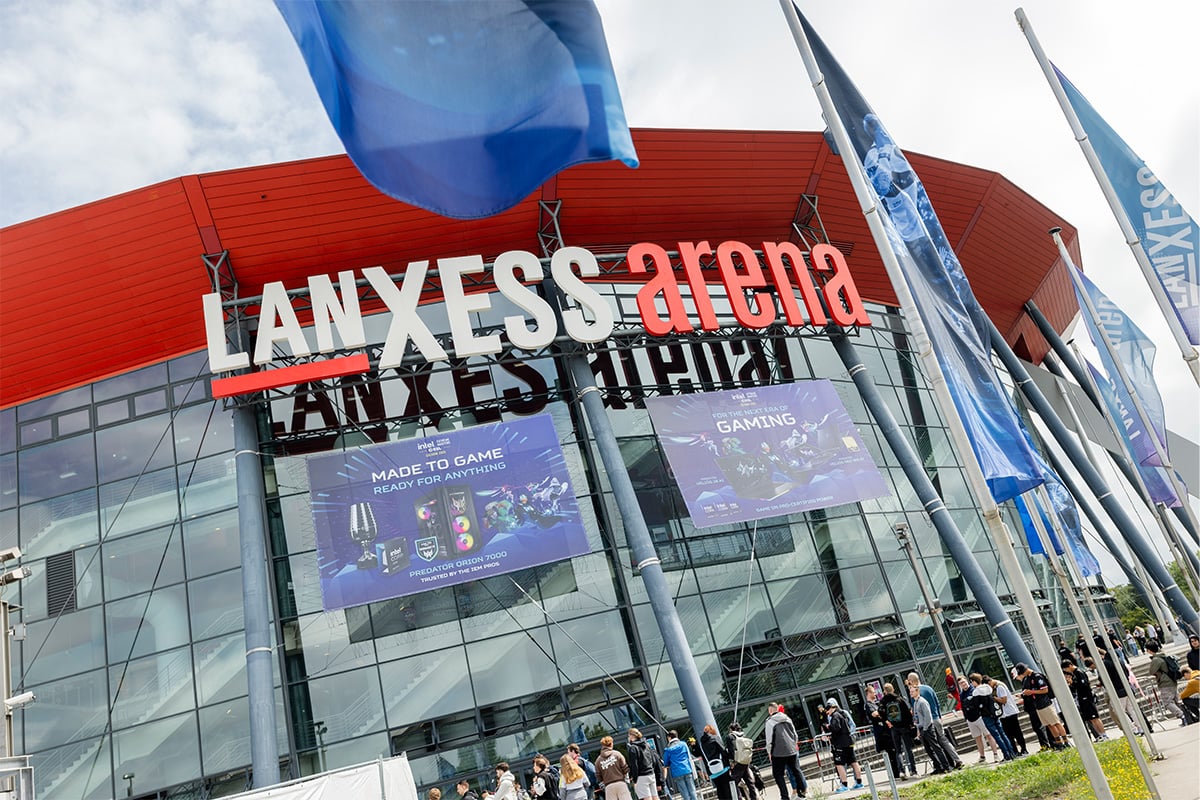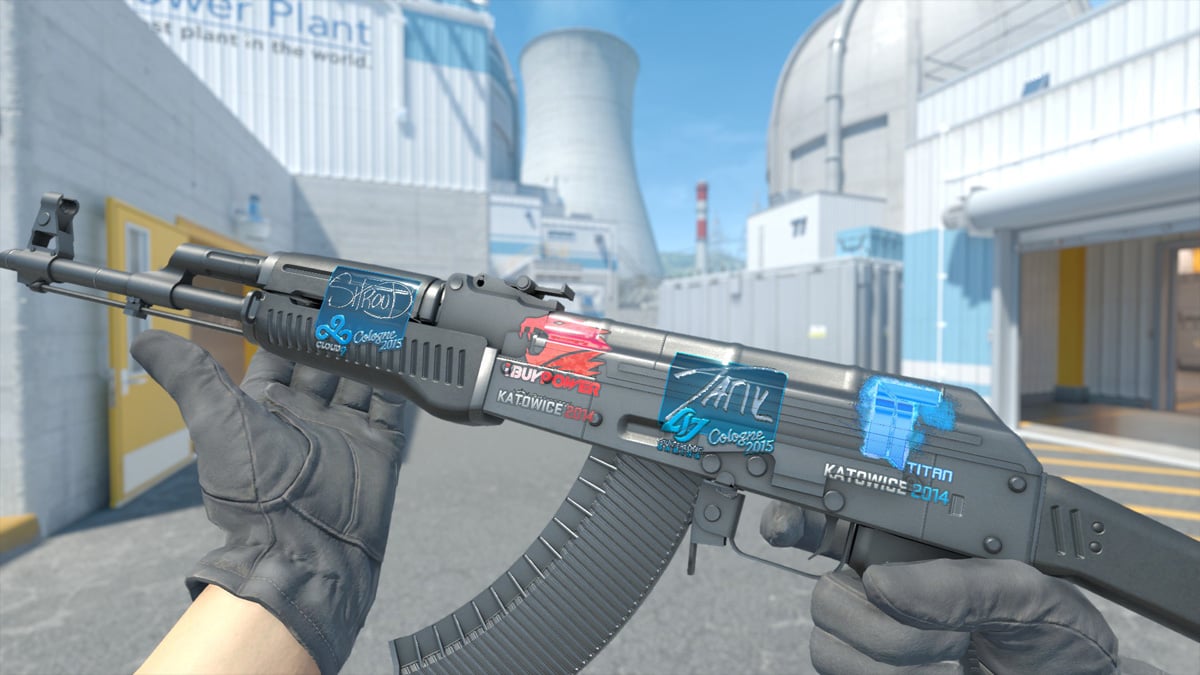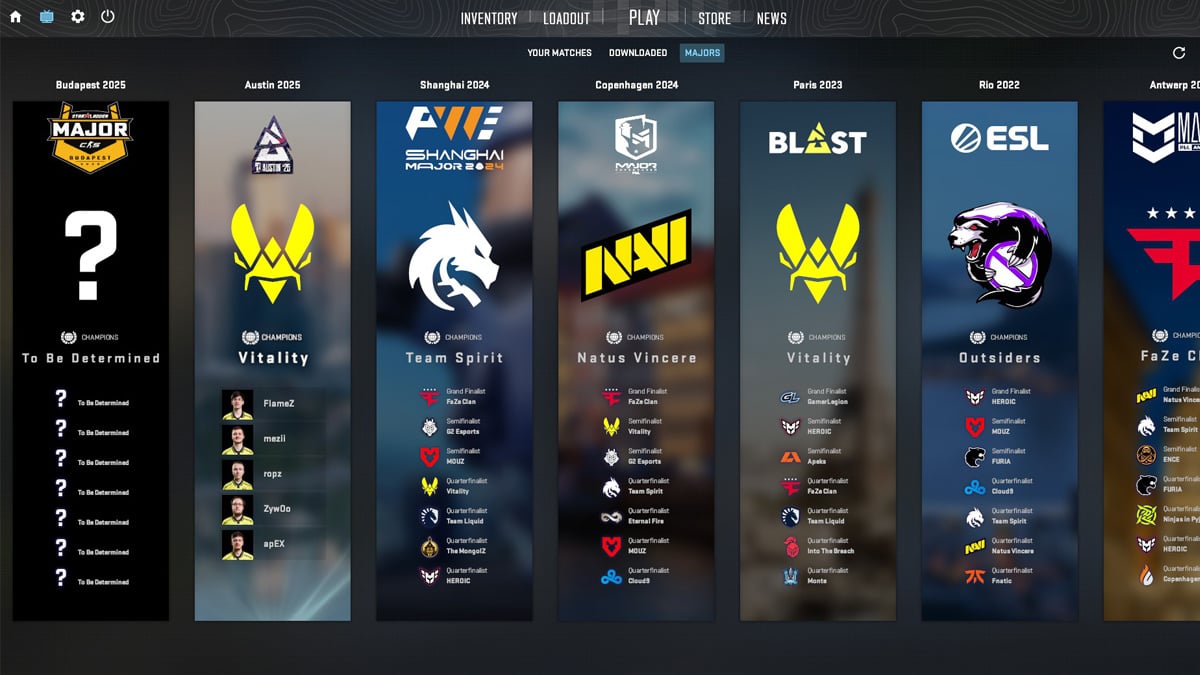It’s that time of the year again – the next Counter-Strike Major is just around the corner, meaning one team is just weeks away from cementing their place in the game’s history forever. CS2 Majors are the height of prestige. Only the best of the best will lift a Major in their career, and there are even some greats of the game who will never be rewarded with the greatest prize the game has to offer. It doesn’t get bigger than this.

But why all the fuss about Counter-Strike Majors? What gives it that status, that prestige? From start to finish, here’s what makes a Counter-Strike Major, a Major, just in time for the StarLadder Budapest Major 2025.
In the open Counter-Strike circuit, anyone can host a tournament. With enough prize money on offer, I could technically put together a tournament myself that has very real implications on the Valve Regional Standings. This is largely a good thing, giving teams more opportunities to rise to the top and compete with the best CS2 teams.
But Majors are different. Because they’re sponsored directly by Valve, complete with a cool $1.25 million prize pool, not just anyone can host a Counter-Strike Major. No. Instead, tournament organizers have to pitch their vision to Valve for every Major, a process that begins several years in advance. For context, Valve set a March 2025 deadline for TOs to submit their 2027 and 2028 proposals. This is to ensure that the events are organized smoothly well ahead of time, and only the best of the best pitches make it to a final product (a CS2 Major).

As for the selection criteria, Valve gave some hints earlier this year as to what it takes into consideration. “We typically prioritize events that take place in regions where a TO has previously held successful events,” Valve said in a leaked email via HLTV earlier this year. “Additionally, it is helpful to identify backup venues in case travel restrictions or other complications make the original location inaccessible.”
“As with previous Major Championships, our primary goal is to identify an event that will provide the greatest entertainment value to existing CS2 customers, so please be specific when describing services or features of your event. Note that in general we do not weigh heavily any features that are untested, new, or in-development. If you are proposing novel features for your event, consider providing additional detail explaining how those features will be developed and tested, and what alternatives you’ll consider if they cannot be executed as planned… The event should be time zone convenient for a significant proportion of CS2 customers (the game has two prime-times, one at 16:00 CET and one at 21:00 CET).”
So don’t go crazy with ideas, and make it accessible. Cool. It’s also worth noting that Valve says it may choose the same tournament organizer for multiple Counter-Strike Majors in the same year. Valve doesn’t operate on a “wait your turn” basis – the best pitch wins. For example, we saw PGL get back-to-back Majors with Stockholm and Antwerp in 2021 and 2022, respectively, yet ESL, arguably the biggest tournament organizer in the scene, went four years between IEM Rio Major 2022 and the planned IEM Cologne Major 2026.
Ultimately, much of the Counter-Strike Major’s appeal comes from stickers. At each Major, Valve releases in-game stickers for each team in purchasable capsules, with each player getting their own sticker based on their signature too. This immortalizes the players and teams in-game forever, cementing a Counter-Strike legacy, no matter what the future holds. Take streamers like tarik and Shroud, for example – many of their current fans won’t know they played CS professionally, but their multiple stickers serve as a cool time capsule for both. Or teams like Titan and iBuyPower – long gone from the modern game, but their retro stickers ensure their memory endures.

This is all well and good, but there’s an extra appeal to stickers: money. This is esports, after all. Money earned from the sticker capsules in-game goes directly to organizations and players, and it’s a hefty sum. It’s alleged that BLAST.tv Paris Major 2023 earned over $110 million in sticker money, distributed across 24 teams. While the exact figures varied based on capsule, this averages out to just over $4.5 million per team. A staggering financial windfall you simply can’t get anywhere else within the Counter-Strike ecosystem, even from the most significant non-Major BLAST and ESL events. So while something like Dota 2’s The International 2021 may have featured a more headline-grabbing prize pool of over $40 million, in practice, a Counter-Strike Major is actually more financially beneficial for everyone except TI’s winners.
For teams, this sticker money can be the difference between life and death. Earlier this year, we saw four-time CS:GO Major winners Astralis on the verge of financial ruin after missing five consecutive Majors. Brand name value was no longer enough, and while things have seemingly stabilized for the Danes since, it was a stark reminder that even the biggest names in Counter-Strike see sticker money as a necessity to survival.
At the top level of Counter-Strike, there is always going to be some element of ego. This is not inherently a bad thing, either. Ego is a necessary ingredient in the recipe for success, after all. But with ego, comes a desire to create and cement a legacy. Winning a Counter-Strike Major does just that. Among fans, you’ll forever be a legend. Even if your Major win was something of a fluke (I’m looking at you, Outsiders), no one can take that away from you. It’s the players who can peak at the right moment, handling the pressure of both the fans and the moment. At that level, everyone can shoot hard, so it’s the true intangibles that come into play.
This alone is enough to give the Counter-Strike Major its prestige. For over a decade now, it has become the one tournament players want to win more than anything else, and so its status is automatically elevated above the rest of the tournament calendar. It’s the one event that catches the attention of casual fans, so viewership is higher than ever. You can head in-game right now and check out all previous Counter-Strike Major winners, from Vitality in Austin to Fnatic in Jönköping.

Every player dreams of lifting five Majors like dupreeh, or winning one eight years after their first like apEX. It’s these Counter-Strike Major records that make it such a special achievement for players to strive for. Even events like non-Major Katowice and Cologne struggle to evoke the same emotions.
This idea of legacy will only become more prominent as the game ages. We are seeing the next generation of players emerge, those who watched the early CS:GO pros and want to emulate their victories. Young players like donk, kyousuke, and molodoy will have had their dreams defined by growing up watching the likes of Get_RiGhT, olofmeister, and FalleN lift Major trophies. There will be another generation of players who grow up watching the pros of today doing the same.
Counter-Strike naturally produces moments of magic. Always has, always will. But the Majors always seem to bring out that special something in players, giving us moments that are etched into CS eternity. In the past, Valve has celebrated these legendary plays with Counter-Strike graffitis, an in-game monument at the scene of the crime. Who could forget olofmeister’s burning defuse on Overpass at ESL One Cologne 2014. Or s1mple’s falling AWP on Cache at ESL One Cologne 2016?

When players of this caliber are forced to think outside the box when the pressure is at its highest, we get moments like this. That’s the beauty of the Counter-Strike Major. And when players know their smartest and wildest plays could earn them a reference in the game’s maps, then yeah, things do get a little crazy.
But incredibly, the Majors are not a finished product. Best-of-ones are still rampant, although you could argue that given the already-hectic schedule involving 32 teams, they remain a necessity at early stages. The removal of best-of-three Grand Finals in favor of best-of-fives for the StarLadder Budapest Major 2025 onwards is a big step forward in keeping the Major’s prestige in the current scene.
Whether you’re a grizzled veteran of the Major or this is your first time, enjoy the StarLadder Budapest Major 2025 in all its glory. It’s Counter-Strike at its best. High stakes, high rewards. Each player with a new chapter to write in their stories. You have a legend like FalleN, chasing a third title nine years after his previous. You have someone like NiKo, a true great, but a player that the Major has eluded over the years. And you even have a player like donk, who, despite his years already has a Major to his name, and is now looking to start catching up to the veterans. Esports do not get more compelling than this.

And stay up to date on all the latest trends in esports
By submitting your information you agree to the Privacy Policy and Terms of Use